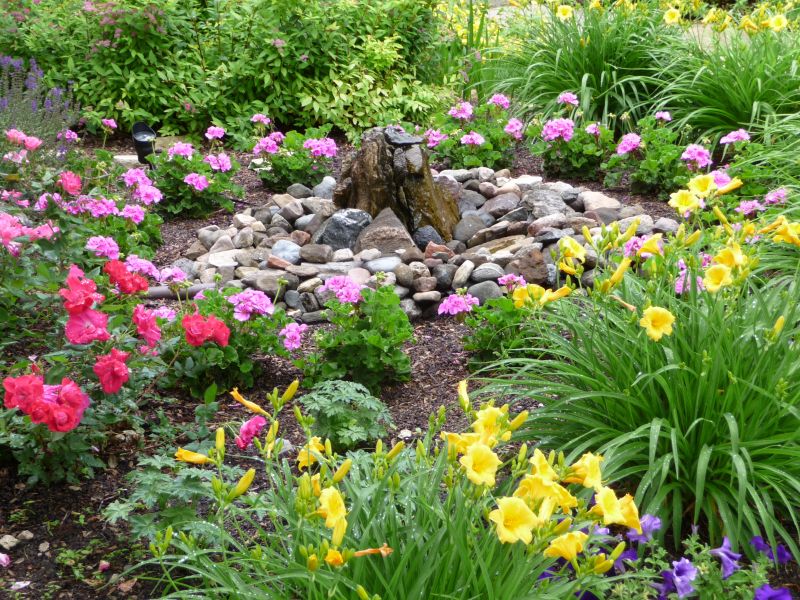Do you remember the color wheel you were introduced to back in your school art classes? If so, it will come in handy this spring when youre designing a new, colorful garden spot or revamping a tired-looking border. If your memory needs a little prodding, heres a short refresher course:
Primary Colors: Red, Yellow and Blue. These colors cannot be created by mixing with any other colors.
Secondary Colors: Orange, Green and Purple. These colors are made by blending equal amounts of primary colors.
The Poppin Power of Contrasting Colors
In gardening and landscaping, two of the most important principals to be used from the color wheel are
CONTRAST: opposites attract! and
TEMPERATURE: Whats hot and whats cool! In our discussion of color, lets first consider contrast.
On one half of the color wheel are the warm colors: red, orange, yellow and their variations. On the opposite side of the wheel are the cool colors: blue, green and purple. Now, choose a warm color and pair it with a cool colorthink red poppies and blue larkspur. Wow! Lets try another. Orange daylilies with violet petunias at their feet. Yellow daffodils and purple grape hyacinths. You get the picture.

How Warm and Cool Colors Affect Your Garden
Lets use the analogy of color in the garden with a beautiful woman. When Ingrid enters a room, the spotlight is on her. She dresses in bold colorsshes flashy. Shes the center of attention. People are drawn to her. She seems to overpower all of the other women in the room. She appears larger than life. However, some people find that she can be overpowering; a short time spent with her is often adequate. Lets describe Ingrid as hot/warm.
Now, consider the colors on the warm side of the color wheel: red, orange, yellow and their variations. In planning your garden, here are some facts to consider about warm/hot colored plants:
- Warm colors can be used in small amounts to perk up a flower bed of cool colors. But too much warmth can make an area seem garish and overpowering.
- Red, especially, will be dominate over other colors in the space. But you can use it as an attention-getter. It will draw the eye to an area and make objects appear closer.
- You can make a small garden appear larger by placing a warm/hot color in front and cool colors toward the rear.
- The opposite is also true. A large space can be made to appear smaller by placing flowers or foliage with warm/hot colors in the back of the bed.
- Red will become even hotter when placed with yellow around it. To cool red down a bit, place blue-colored flowers beside it.
Now, lets take a look at Jennifer. Shes not trying to get attention, but you cant help but notice her. She appears calm and serene; her quiet beauty is naturally appealing. To be in her presence is relaxing. Lets describe Jennifer as cool.
So, what are some of the benefits of cool colorsthe blues, greens and purples in the garden?
- They are wonderful in shaded areas, but dont put them in bright light or theyll appear washed out. If they are in a sunny area, place them near warm colors.
- Use cool colors to help to visually enlarge a small space.
- Blue and shades of violet are outstanding colors in the garden; use them to stabilize other colors. They can serve to pull all of the other colors into a cohesive grouping. Think of them as quiet, strong leadersforces that bring out best in the group.
- A too-hot bed or border can be balanced by planting four to five times more plants with cool colors than warm colors.
- Green, like Jennifer, is restful to the eye. Its a color that you cant go wrong with in any situation.
Armed with your color wheelor the knowledge of whats hot and whats coolcreate an new bed or border this spring thats not only eye-catching but eye-pleasing as well.
